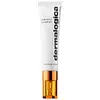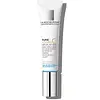What's inside
What's inside
 Key Ingredients
Key Ingredients

 Benefits
Benefits

 Concerns
Concerns

 Ingredients Side-by-side
Ingredients Side-by-side

Water
Skin ConditioningButylene Glycol
HumectantPropanediol
SolventGlycerin
HumectantC15-19 Alkane
SolventSalvia Hispanica Seed Oil
MoisturisingSodium PCA
HumectantTrehalose
HumectantPoria Cocos Polysaccharide
Skin ConditioningPapain
Skin ConditioningDunaliella Salina Extract
Skin ConditioningAminopropyl Ascorbyl Phosphate
AntioxidantTerminalia Arjuna Extract
Skin ConditioningTremella Fuciformis Sporocarp Extract
AntioxidantAscorbyl Methylsilanol Pectinate
AntioxidantPalmitoyl Tripeptide-5
Skin ConditioningSodium Hyaluronate
HumectantPhytosterols
Skin ConditioningAlgin
MaskingCitrus Grandis Peel Oil
MaskingPhytosteryl Oleate
Skin ConditioningTocopherol
AntioxidantSerine
MaskingOleic Acid
EmollientInositol
HumectantHelianthus Annuus Seed Oil
EmollientBetaine
HumectantCarrageenan
Panthenol
Skin ConditioningDipotassium Glycyrrhizate
HumectantMethylpropanediol
SolventProline
Skin ConditioningXylitol
HumectantCalcium Gluconate
HumectantPantolactone
HumectantLecithin
EmollientXanthan Gum
EmulsifyingPentylene Glycol
Skin ConditioningAminomethyl Propanol
BufferingCaprylyl Glycol
EmollientPolyacrylate-13
Acrylates/C10-30 Alkyl Acrylate Crosspolymer
Emulsion StabilisingTetrasodium Glutamate Diacetate
Polyisobutene
Ethylhexylglycerin
Skin ConditioningSodium Benzoate
MaskingCitric Acid
BufferingGluconolactone
Skin ConditioningPolysorbate 20
EmulsifyingPotassium Sorbate
PreservativeCarbomer
Emulsion Stabilising1,2-Hexanediol
Skin ConditioningSodium Hydroxide
BufferingLimonene
PerfumingPhenoxyethanol
PreservativeWater, Butylene Glycol, Propanediol, Glycerin, C15-19 Alkane, Salvia Hispanica Seed Oil, Sodium PCA, Trehalose, Poria Cocos Polysaccharide, Papain, Dunaliella Salina Extract, Aminopropyl Ascorbyl Phosphate, Terminalia Arjuna Extract, Tremella Fuciformis Sporocarp Extract, Ascorbyl Methylsilanol Pectinate, Palmitoyl Tripeptide-5, Sodium Hyaluronate, Phytosterols, Algin, Citrus Grandis Peel Oil, Phytosteryl Oleate, Tocopherol, Serine, Oleic Acid, Inositol, Helianthus Annuus Seed Oil, Betaine, Carrageenan, Panthenol, Dipotassium Glycyrrhizate, Methylpropanediol, Proline, Xylitol, Calcium Gluconate, Pantolactone, Lecithin, Xanthan Gum, Pentylene Glycol, Aminomethyl Propanol, Caprylyl Glycol, Polyacrylate-13, Acrylates/C10-30 Alkyl Acrylate Crosspolymer, Tetrasodium Glutamate Diacetate, Polyisobutene, Ethylhexylglycerin, Sodium Benzoate, Citric Acid, Gluconolactone, Polysorbate 20, Potassium Sorbate, Carbomer, 1,2-Hexanediol, Sodium Hydroxide, Limonene, Phenoxyethanol
Water
Skin ConditioningGlycerin
HumectantDimethicone
EmollientButyrospermum Parkii Butter
Skin ConditioningLimnanthes Alba Seed Oil
Skin ConditioningAscorbic Acid
AntioxidantMannose
HumectantButylene Glycol
HumectantParaffinum Liquidum
EmollientAmmonium Polyacryloyldimethyl Taurate
Emulsion StabilisingCetyl Alcohol
EmollientPEG-100 Stearate
Glyceryl Stearate
EmollientPolymethylsilsesquioxane
Potassium Hydroxide
BufferingParaffin
PerfumingSodium Styrene/Ma Copolymer
Emulsion StabilisingCera Microcristallina
Emulsion StabilisingMadecassoside
AntioxidantDimethicone/Vinyl Dimethicone Crosspolymer
Skin ConditioningDimethiconol
EmollientDisodium EDTA
Hydrolyzed Hyaluronic Acid
HumectantCaprylyl Glycol
EmollientAcetyl Dipeptide-1 Cetyl Ester
Skin ConditioningXanthan Gum
EmulsifyingPentaerythrityl Tetra-Di-T-Butyl Hydroxyhydrocinnamate
AntioxidantPhenoxyethanol
PreservativeWater, Glycerin, Dimethicone, Butyrospermum Parkii Butter, Limnanthes Alba Seed Oil, Ascorbic Acid, Mannose, Butylene Glycol, Paraffinum Liquidum, Ammonium Polyacryloyldimethyl Taurate, Cetyl Alcohol, PEG-100 Stearate, Glyceryl Stearate, Polymethylsilsesquioxane, Potassium Hydroxide, Paraffin, Sodium Styrene/Ma Copolymer, Cera Microcristallina, Madecassoside, Dimethicone/Vinyl Dimethicone Crosspolymer, Dimethiconol, Disodium EDTA, Hydrolyzed Hyaluronic Acid, Caprylyl Glycol, Acetyl Dipeptide-1 Cetyl Ester, Xanthan Gum, Pentaerythrityl Tetra-Di-T-Butyl Hydroxyhydrocinnamate, Phenoxyethanol
Ingredients Explained
These ingredients are found in both products.
Ingredients higher up in an ingredient list are typically present in a larger amount.
Butylene Glycol (or BG) is used within cosmetic products for a few different reasons:
Overall, Butylene Glycol is a safe and well-rounded ingredient that works well with other ingredients.
Though this ingredient works well with most skin types, some people with sensitive skin may experience a reaction such as allergic rashes, closed comedones, or itchiness.
Learn more about Butylene GlycolCaprylyl Glycol is a humectant and emollient, meaning it attracts and preserves moisture.
It is a common ingredient in many products, especially those designed to hydrate skin. The primary benefits are retaining moisture, skin softening, and promoting a healthy skin barrier.
Though Caprylyl Glycol is an alcohol derived from fatty acids, it is not the kind that can dry out skin.
This ingredient is also used as a preservative to extend the life of products. It has slight antimicrobial properties.
Learn more about Caprylyl GlycolGlycerin is already naturally found in your skin. It helps moisturize and protect your skin.
A study from 2016 found glycerin to be more effective as a humectant than AHAs and hyaluronic acid.
As a humectant, it helps the skin stay hydrated by pulling moisture to your skin. The low molecular weight of glycerin allows it to pull moisture into the deeper layers of your skin.
Hydrated skin improves your skin barrier; Your skin barrier helps protect against irritants and bacteria.
Glycerin has also been found to have antimicrobial and antiviral properties. Due to these properties, glycerin is often used in wound and burn treatments.
In cosmetics, glycerin is usually derived from plants such as soybean or palm. However, it can also be sourced from animals, such as tallow or animal fat.
This ingredient is organic, colorless, odorless, and non-toxic.
Glycerin is the name for this ingredient in American English. British English uses Glycerol/Glycerine.
Learn more about GlycerinPhenoxyethanol is a preservative that has germicide, antimicrobial, and aromatic properties. Studies show that phenoxyethanol can prevent microbial growth. By itself, it has a scent that is similar to that of a rose.
It's often used in formulations along with Caprylyl Glycol to preserve the shelf life of products.
Water. It's the most common cosmetic ingredient of all. You'll usually see it at the top of ingredient lists, meaning that it makes up the largest part of the product.
So why is it so popular? Water most often acts as a solvent - this means that it helps dissolve other ingredients into the formulation.
You'll also recognize water as that liquid we all need to stay alive. If you see this, drink a glass of water. Stay hydrated!
Learn more about WaterXanthan gum is used as a stabilizer and thickener within cosmetic products. It helps give products a sticky, thick feeling - preventing them from being too runny.
On the technical side of things, xanthan gum is a polysaccharide - a combination consisting of multiple sugar molecules bonded together.
Xanthan gum is a pretty common and great ingredient. It is a natural, non-toxic, non-irritating ingredient that is also commonly used in food products.
Learn more about Xanthan Gum